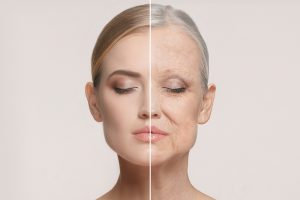
By Dermatology Consultants
Face precancerous changes head-on
If you have any flaky, rough or pink spot on any sun-exposed skin, they may be actinic keratoses (AKs)
pink, rough, flaky spots on your face or other sun-exposed areas, they may be a type of precancer called actinic keratoses (AKs). Some AKs – a small percentage – turn into Squamous Cell Carcinoma (SCC). SCC is the second most common type of skin cancer, after Melanoma. AKs can be hard to find and are almost always caused by many years of sun damage.
Treating AKs is important in preventing the formation of skin cancer, but it also improves skin quality such as pigmentation and texture. Common treatments for AKs are:
- Spot treatment, which is performed with the application of liquid nitrogen/cryotherapy onto the AK
- Field treatment, which treats a broad area using various methods like creams and light-based treatments
Think of these options as either pulling up weeds from the garden (spot treatment) or spraying a weed killer over your whole lawn (field treatment). Talk to your dermatologist about checking for precancerous change and if any AKs are found, creating a plan for treatment. Always use sunscreen and other sun-protective measures to prevent additional sun damage.
Correcting facial structure
Skin isn’t the only part of us that changes as we age. Fat that pads bone and the actual bone structure under the skin are the reason many of the folds and facial shape transformation happen with age. Fat pads in the cheeks descend and create jowls and a loss of volume. Bone structure naturally changes, but the change results in effects like sunken tear troughs and a jawline that’s less prominent. Facial proportions in general descend and create an inversion of the “triangle of youth.”

Facial proportions descend as we age
There’s good news, though. We have injectable fillers that provide a non-invasive way of correcting facial structure. By far the most common filler is hyaluronic acid (HA). HA occurs naturally in joints, eyes and skin. For injectables it has been used as a temporary filler with effects that last anywhere from 6 months to 2 years. HA fillers have been available for several years and are generally very safe (there is still a small chance of complications, as with any procedure).
By age 40 most people have experienced some change at least some change in their facial 3-dimensional structure and could benefit from injectable fillers. Ask your dermatologist if you are a candidate for fillers and talk about the treatment in more detail.